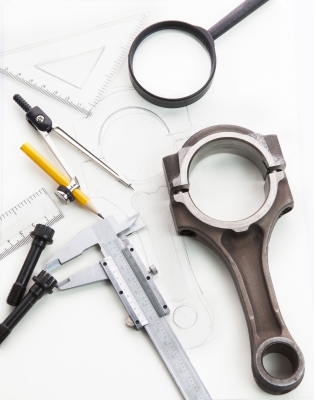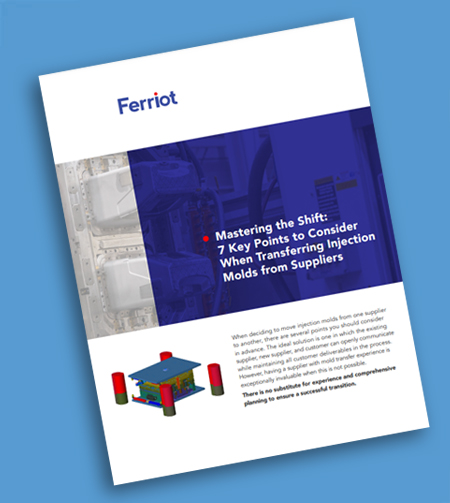Most engineers do not have ways to attach notes, tolerances, colors, etc. to a 3-D model, so  they typically use the 2-D drawing to communicate important information. This blog post is an explanation of why 3-D CAD data is used as primary data and why it is critical for 2-D prints to not conflict with the source data.
they typically use the 2-D drawing to communicate important information. This blog post is an explanation of why 3-D CAD data is used as primary data and why it is critical for 2-D prints to not conflict with the source data.
The arrival of 3-D CAD modeling and direct CNC machining have allowed mold-makers to program the machining of molds directly from the 3-D model. This has significantly helped with saving time and money in both design and machining over old manual efforts in mold construction. Due to these technologies, most tool build times are in the sub-10 weeks range, as opposed to as much as twice that in the not too distant past.
New Technology = New Considerations
These advancements in technology come with some challenges that must be taken into consideration.
Consideration #1: 3-D and 2-D Must Work Together
Information on the 2-D part drawing cannot be allowed to trump data in the source 3-D model, an approach that is difficult to manage in today’s world because most CAD systems create the drawing from the source 3-D model. Indeed, the 3-D model defines the geometry of the part, but the 2-D part drawing is used to add specific information and notes about the part. Unfortunately these systems may allow for manual dimensional adjustments on the drawing that may not transfer back to the 3-D base model. And that’s where some problems enter: the designer of both the 3-D data and the 2-D print must resolve differences to clearly define to manufacturers what to produce.
Consideration #2: Part Tolerances
Designers recognize the need for tolerances. In most cases, an equal plus and minus allowance is noted for specific dimensions on the 2-D print. In some instances, it was common practice to tolerance only one side of certain feature on a 2-D print. This approach would allow for expected variations in sizes while still allowing parts to fit together as intended – even at the extreme limits of tolerances. However, if the 3-D model were designed using this approach, the resulting mold and part would be built at the extreme limits of the available tolerance, actually making it difficult, if not impossible, to meet the expected tolerance, and certainly would not be able to attain statistical capability. The solution is to design to a nominal size and apply tolerances bi-laterally, thereby allowing tolerances seen in mold-making and injection molding, while still meeting design intent.
Statements like “2-D part drawings supersede 3-D design data” are impractical. When the 3-D design data is used to create the part, it has to be primary. Anything else is putting unreasonable responsibility on others to catch every difference between the two types of part definition.
Consideration #3: Draft Angles and Shut-off Angles
This is a challenging but critical subject in part design. Because a mold is machined directly from 3-D CAD data, all draft angles and shut-off angles must be fully defined in the 3-D model. Again, notes on a 2-D drawing really aren’t able to be used in the mold build process – unless a mold designer modifies the 3-D part model – potentially a risky idea unless there is careful collaboration between the mold designer and the part designer.
Summary
To take full advantage of the technologies available it’s essential to address these challenges. In fact, in today’s world, it is unavoidable – it’s only a question of when. Early in the design stages is far better than if addressed at the start of the mold build, it is time consuming and potentially puts the part design at risk unless mold designers and part designers communicate carefully. Worse yet, if not properly addressed, there may very well be undue challenges in manufacturing, increased costs, and disappointing product performance.
Image courtesty of khunaspix via FreeDigitalPhotos.net




